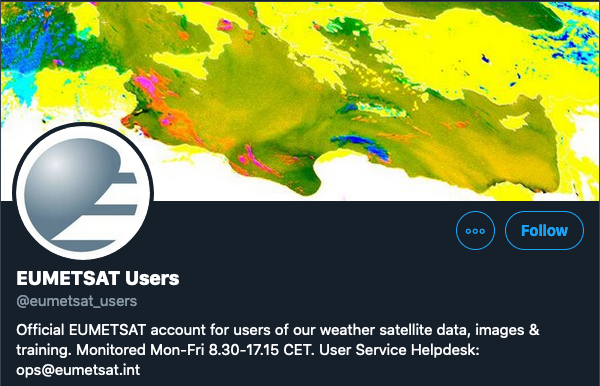Short_course_07: The colour of the oceans
Section outline
-
In this short course you will learn:
- What is meant by this term "ocean colour'.
- Why the colour of the ocean matters.
- How we measure ocean colour from satellite.
We will also demonstrate how you can access and work with ocean colour data provided by EUMETSAT using CODA and Python Jupyter Notebooks.
You can watch the recording of the short course here below:
-
 Video from the EUMETSAT MOOC "Monitoring the Oceans from Space" giving a 1-minute introduction to ocean colour data.Video from the EUMETSAT MOOC "Monitoring the Oceans from Space" discussing the benefit of Ocean Colour data in monitoring our oceans.
Video from the EUMETSAT MOOC "Monitoring the Oceans from Space" giving a 1-minute introduction to ocean colour data.Video from the EUMETSAT MOOC "Monitoring the Oceans from Space" discussing the benefit of Ocean Colour data in monitoring our oceans. -
Accessing Copernicus Data through CODA
Visualising Sentinel-3 Ocean Colour Data
-
Within this topic we will look at the format of the Sentinel-3 marine data files, and the processing that takes place to get raw data measured by the satellite sensors down to a usable product.
-
Overview of ocean colour products from CMDS: to access the video, please use the password 'copernicus'.
-
Within this book you will find two chapters. The first covers the processing that takes place to generate the data that is ultimately received by users of the CMDS. The second chapter goes in to the format of these data files, and the information that can be extracted from them.
-
-
Our training activities support users in the member states and among the World Meteorological Organization (WMO) members in the application of EUMETSAT data, products, and services, including Copernicus data provided by EUMETSAT. Find our more at our web page.
Subscribe to the Training Bulletin the joint EUMETSAT, EUMETCAL, EUMeTrain newsletter on new activities and resources in European meteorological training — published every quarter.
Contact us for questions about training events and professional development opportunities at training@eumetsat.int.
Follow us on Twitter @eumetsat_users

-
-
-
This link provides access to the example code we used during the shortcourse
-

